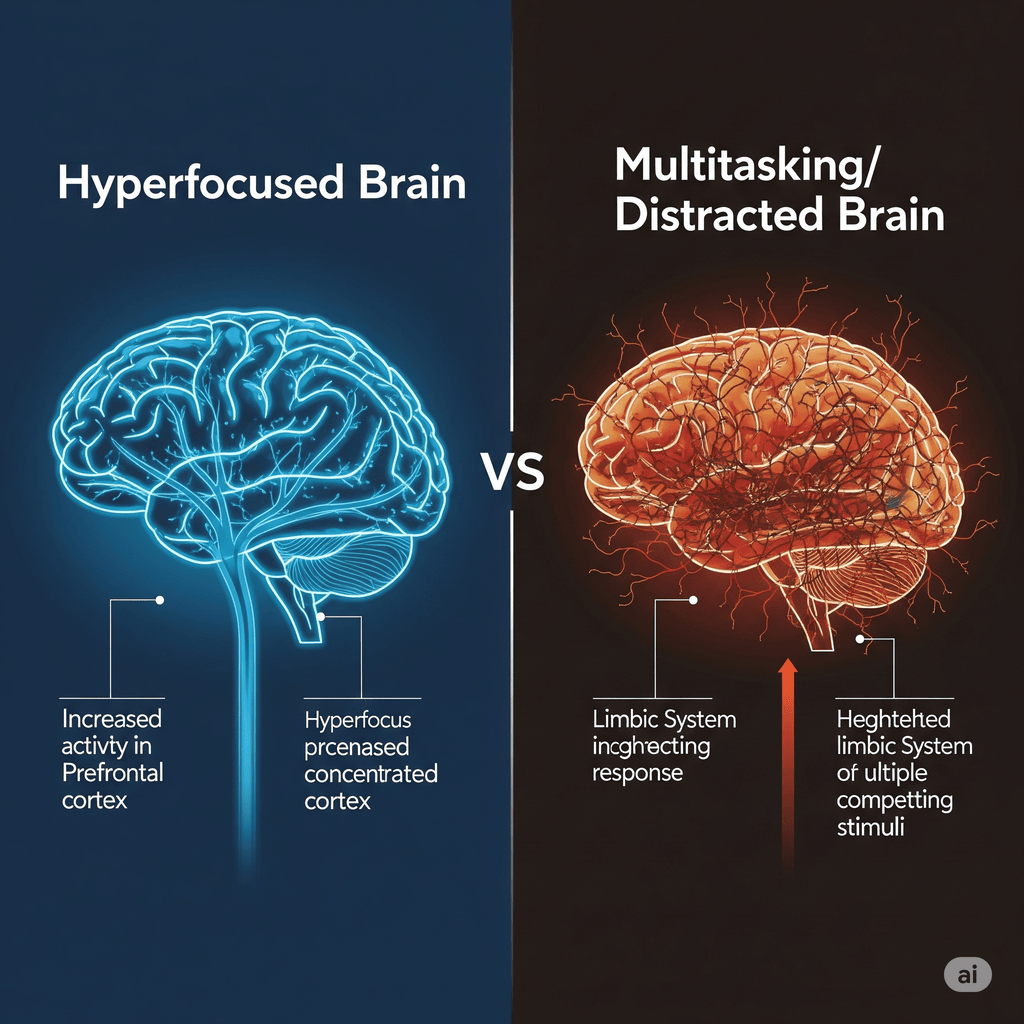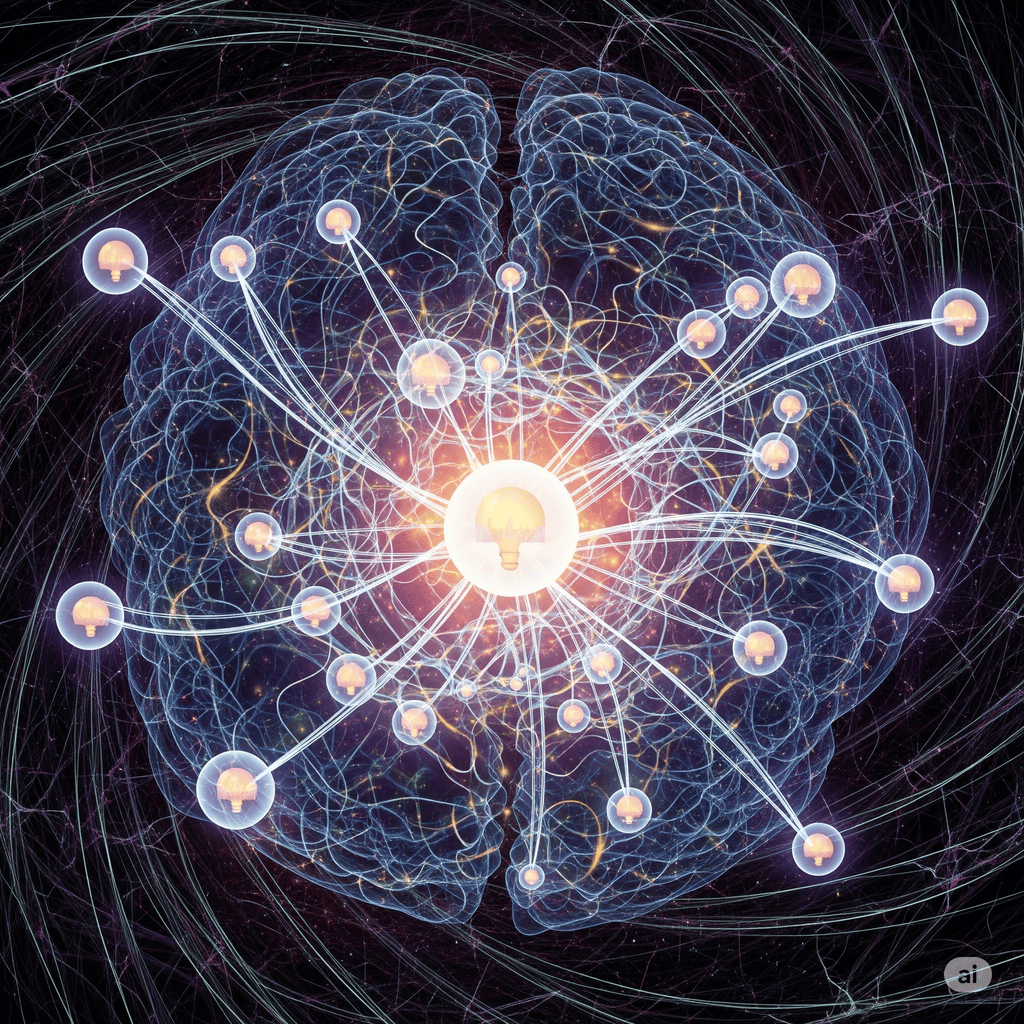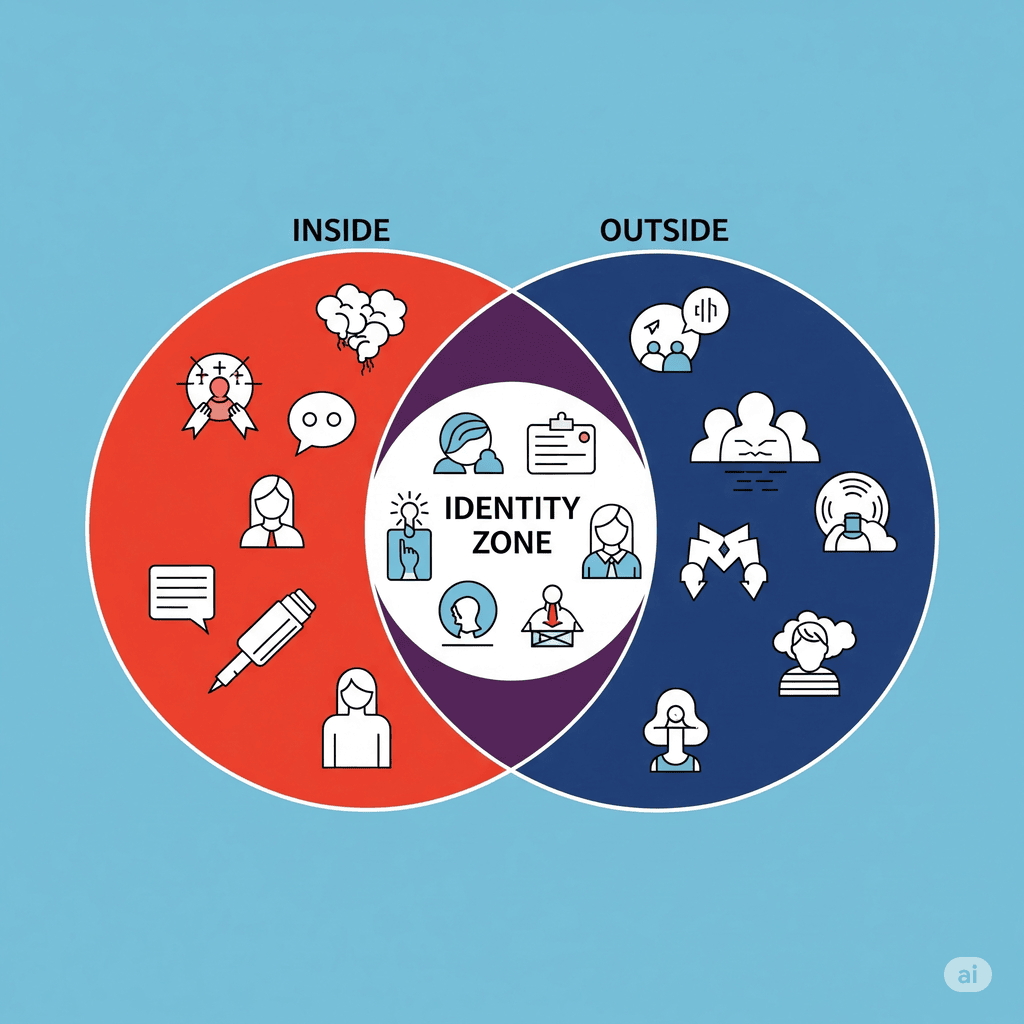In today’s information age, attention is the new currency. Every day, we are bombarded with thousands of notifications, digital distractions, and relentless multitasking demands. But have you ever wondered: why is it so difficult to maintain deep focus and generate fresh ideas? The answer lies in how we manage two main modes of the brain: hyperfocus and scatterfocus.
Chris Bailey, through his book “Hyperfocus: The New Science of Attention, Productivity, and Creativity,” dissects the secrets of managing attention to boost your productivity and creativity. This article will unveil its fundamental foundations—and why you must master them before your competitors do.
Hyperfocus — A Revolutionary Way to Manage Attention
Let’s start with the fundamental concept: hyperfocus. In a world full of distractions, the ability to place your entire attention on a single task without fragmentation is a strategic advantage. Hyperfocus is a state where your brain is fully immersed in work, much like an athlete entering the “zone.” In this condition, productivity soars, the quality of work improves, and you can complete important tasks more quickly and effectively.
Chris Bailey emphasizes that hyperfocus is not just a theory; it is a skill that can be trained. By identifying the best times to focus (Creative Prime Time) and organizing your work environment, you can create space for hyperfocus to thrive. Additionally, working in structured time blocks and managing energy are also key.
However, activating hyperfocus is not as easy as flipping your hand. Many get trapped in the illusion of productivity: feeling busy while their attention is scattered everywhere. This is the main trap of the digital age.

A complete framework for implementing hyperfocus, including strategies for prioritizing tasks and setting up a distraction-free environment, is discussed in specific steps in this book. However, there are three common mistakes often made when trying to hyperfocus, which are thoroughly examined in our summary at MentorBuku.
Scatterfocus — The Hidden Source of Your Brain’s Creativity
If hyperfocus is about narrowing attention, then scatterfocus is the opposite: allowing thoughts to wander in a directed manner. Scatterfocus does not mean daydreaming aimlessly, but rather giving the brain space to connect the dots of ideas hidden in the subconscious. This is the brain’s creative mode often utilized by great thinkers like Salvador Dalí and Mihaly Csikszentmihalyi.
During scatterfocus, your brain naturally reflects on problems, identifies patterns, and generates innovative solutions. Many great discoveries occur while someone is engaged in light activities such as walking or taking a shower—when the brain is in scatterfocus mode. Bailey mentions that scheduling specific time for scatterfocus is as important as hyperfocus sessions. Both complement each other: you need hyperfocus to complete tasks, and scatterfocus to generate new ideas.

Advanced techniques for optimizing scatterfocus—including how to manage “mind wandering” to remain productive and not let it turn into mere distraction—are part of the exclusive insights we have prepared at MentorBuku.
Taming Distractions and Building Focus Habits
Nothing is more challenging than maintaining attention in today’s digital world. Phone notifications, incoming emails, and social media are the primary enemies of hyperfocus. Often, we fail to build focus habits because our surroundings do not support it. Chris Bailey analyzes that the biggest sources of distraction actually come from within: uncontrolled curiosity, the desire to react immediately, and procrastination habits.
The solution is not only to turn off notifications or apply “deep work” techniques but also to build habits that reinforce self-control. Through structured practice, discipline, and understanding attention patterns of the brain, you can gradually enhance your focus ability. Bailey outlines tiny habits that become the foundation of hyperfocus and scatterfocus routines.
However, there is a trap: many people fail to maintain focus habits because they do not know how to address “attention fatigue” and build an effective support system. Templates and practical examples for building long-term focus habits are only available at MentorBuku.
Also read: The 4-Hour Workweek by Timothy Ferriss
Integrating Hyperfocus & Scatterfocus into Your Routine
Often, we get stuck in one mode: overly focused (hyperfocus) to the point of exhaustion, or allowing thoughts to wander (scatterfocus) so much that we lose direction. The key to success is to integrate both proportionally into your daily routine. In other words, you need to know when to sharpen your focus and when to give space for creativity to flourish.
Chris Bailey emphasizes the importance of finding your personal rhythm—identifying when your brain is most optimal for deep work and when the best time is to rest and let ideas emerge naturally. Many successful professionals schedule specific times for deep work and creativity sessions in their agendas.
Also read: Luxury Marketing, Sustainability and Technology (Routledge Studies in Luxury Management) by Park Thaichon, Sara Quach
However, specific strategies for adjusting hyperfocus and scatterfocus schedules to fit your lifestyle and unique challenges can only be found in our complete summary.
Conclusion: A New Era of Attention = A New Era of Success
The key to future productivity and creativity is not just hard work, but smart work—by mastering attention. Hyperfocus and scatterfocus are two sides of the same coin that you must practice and utilize. By understanding when and how to activate these two modes, you will surpass conventional productivity limits.
Do not let your attention be stolen by the digital world. Build focus habits, create space for creativity, and become a pioneer in the era of relentless competition.
This article is just the spark. Imagine if one idea from here could change the way you work or think. Now, imagine what dozens of other strategic ideas could do. That is the power that awaits you.
Sign up and Get Free Access at MentorBuku Now!

